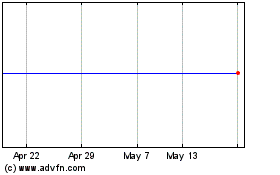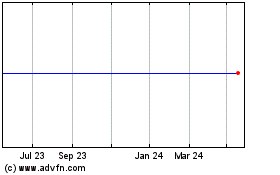An exploration and evaluation asset is no longer classified as
such when the technical feasibility and commercial viability of
extracting a mineral resource is proved. Once commercial reserves
are found, exploration and evaluation assets are transferred to
account "Oil and Gas Properties" and depleted using the
unit-of-production method as described in paragraph b) Depreciation
and depletion below.
Development costs
Expenditures related to the development of hydrocarbons are not
recognised as exploration and evaluation assets but as oil and gas
properties.
Development costs include the cost of development wells to
produce proved reserves, the cost of production facilities (such as
flow lines, separators, oil treatment facilities, heaters, storage
tanks, improved recovery systems and gas processing facilities),
borrowing costs and other costs necessary to obtain access to
proved and probable reserves.
b) Depreciation and depletion
Property, plant and equipment related to oil and gas production
activities are depreciated using the unit-of-production method as
described below, except in the case of assets whose useful life is
shorter than the lifetime of the field (roads, pipelines, pumps,
etc.), in which case the straight-line method is applied.
Exploration and evaluation assets are only depreciated when the
field is in production.
(i) Producing wells, well pads and other producing items are
depleted over Proved and Probable (2P) reserves on a field-by-field
basis.
(ii) Capitalised future decommissioning costs are depleted over
Proved and Probable reserves (2P).
(iii) Other development costs that cannot be attributed to
particular producing units are allocated to cost centres of related
oil fields based on their reserve share in the total portfolio.
Such costs are depleted over Proved and Probable (2P) reserves on a
field-by-field basis.
Since 2P reserves assume future development costs to access
proved undeveloped and probable reserves, an adjustment is made to
the depreciation base to reflect the effect of future development
costs.
Property, plant and equipment, other than those described above,
are depreciated using the straight-line method on the basis of the
acquisition cost of the assets less their estimated residual value,
over the years of estimated useful life of the assets, as
follows:
Buildings and construction 5 to 30 years
Machinery, equipment and 3 to 20 years
transport
Other 3 to 7 years
The residual values and useful lives of these assets are
reviewed annually. Depreciation and depletion starts when the
assets become available for use.
Impairment of assets - Assets that are subject to amortisation
are reviewed for impairment whenever events or changes in
circumstances indicate that the carrying amount may not be
recoverable. For the purposes of assessing impairment, assets are
grouped into cash-generating units as they generate cash flows
which are independent from other units.
Recoverable amount is the higher of fair value less costs to
sell and value in use. In assessing value in use, the estimated
future cash flows are discounted to their present value using a
pre-tax risk adjusted discount rate.
If the recoverable amount of an asset (or a cash-generating
unit) is estimated to be less than its carrying amount, the
carrying amount of the asset (or the cash-generating unit) is
reduced to its recoverable amount, and an impairment loss is
recognised in the consolidated statement of comprehensive
income.
The basis for future depreciation or amortisation will take into
account the reduction in the value of the asset as a result of any
accumulated impairment losses.
When an impairment loss subsequently reverses, the carrying
amount of the asset (or the cash-generating unit) is increased to
the revised estimate of its recoverable amount, so that the
increased carrying amount does not exceed the carrying amount that
would have been determined in case no impairment loss had been
recognised for the asset (or the cash-generating unit) in prior
years. A reversal of an impairment loss is recognised in the
consolidated statement of comprehensive income. The reversal is
capped at the value that the asset would have been held at had it
continued to be depreciated. An impairment loss recognised for
goodwill can not be reversed in a subsequent period.
Impairment of oil and gas properties
For oil and gas properties, assets are tested for impairment
whenever facts and circumstances indicate potential impairment.
Impairment reviews compare the carrying amount of an asset with its
recoverable amount. Recoverable amount is the higher of value in
use and fair value less costs to sell. As the company is in the
development phase, recoverable amount is based on fair value less
costs to sell with the reference to market participant assumptions
of the future cash flows to be obtained from the proved and
probable reserves.
Recognition and measurement of financial instruments - The Group
recognises financial assets and liabilities in its statement of
financial position when it becomes a party to the contractual
obligation of the instrument.
Financial assets and liabilities are initially recognised at
fair value. The accounting policies for subsequent re-measurement
of these items are disclosed in the respective accounting policies
set out below.
Cash and cash equivalents - Cash and cash equivalents comprise
cash in hand, current balances with banks and similar institutions;
and short-term highly liquid investments that are readily
convertible to known amounts of cash, are subject to insignificant
risk of changes in value and have a maturity of three months or
less from the date of acquisition.
Financial instruments - Eurobonds are non-derivative financial
assets with fixed coupon receipts. The financial instrument is
measured at amortised cost using the effective interest method,
less any impairment. Interest income is recognised by applying the
effective interest rate.
Effective interest method
The effective interest method is a method of calculating the
amortised cost of a financial asset or a financial liability and of
allocating interest income over the relevant period. The effective
interest rate is the rate that exactly discounts estimated future
cash receipts (including all fees on points paid or received that
form an integral part of the effective interest rate, transaction
costs and other premiums or discounts) through the expected life of
the financial instrument, or, where appropriate, a shorter period,
to the net carrying amount on initial recognition.
Trade and other receivables- Trade and other receivables are
recognised initially at fair value and subsequently measured at
amortised cost using the effective interest method, less provision
for impairment.
The primary factors that the Group considers when determining
whether a receivable is impaired is its overdue status. The
following other principal criteria are also used to determine that
there is objective evidence that an impairment loss has
occurred:
-- any portion of the receivable is overdue and the late payment
cannot be attributed to a delay caused by the settlement
systems;
-- the counterparty experiences a significant financial
difficulty as evidenced by its financial information that the Group
obtains;
-- the counterparty considers bankruptcy or a financial reorganisation;
-- there is adverse change in the payment status of the
counterparty as a result of changes in the national or local
economic conditions that impact the counterparty.
Inventories- Inventories are stated at the lower of cost and net
realisable value. Cost is determined by the weighted average method
and comprises direct purchase costs, cost of production,
transportation and custom clearance costs.
Trade and other payables - Trade and other payables are carried
at payment or settlement amounts. Where the time value of money is
material, payables are initially recognised at fair value and
subsequently carried at amortised cost using the effective interest
rate.
Borrowings - Borrowings are initially recognised at fair value,
being the fair value of the proceeds received net of issue costs
associated with the borrowing. After initial recognition, interest
bearing loans and borrowings are subsequently measured at amortised
costs using the effective interest method.
Operating leases - Where the Group is a lessee in a lease which
does not transfer substantially all the risks and rewards
incidental to ownership from the lessor to the Group, the total
lease payments are recognised on a straight-line basis over the
period of the lease and charged to the consolidated statement of
comprehensive income.
Provisions and contingencies - Provisions are recognised when
the Group has a present obligation (legal or constructive) as a
result of a past event, it is probable that an outflow of resources
embodying economic benefits will be required to settle the
obligation and a reliable estimate can be made of the amount of the
obligation. Where the Group expects some or all of a provision to
be reimbursed, for example, under an insurance contract, the
reimbursement is recognised as a separate asset, but only when the
reimbursement is virtually certain. The expense relating to any
provision is presented in the statement of comprehensive income net
of any reimbursement. If the effect of the time value of money is
material, provisions are determined by discounting the expected
future cash flows at a pre-tax discount rate that reflects current
market assessments of the time value of money and, where
appropriate, the risks specific to the liability. Where discounting
is used, the increase in the provision due to the passage of time
is recognised as finance cost. Any change in the amount recognised
for environmental and litigation and other provisions arising
through changes in discount rates is included within finance
cost.
Exillon Energy (LSE:EXI)
Historical Stock Chart
From Sep 2024 to Oct 2024

Exillon Energy (LSE:EXI)
Historical Stock Chart
From Oct 2023 to Oct 2024
